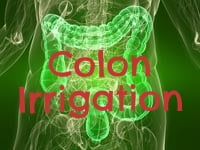Ginger has been used by many cultures in cooking and spicing up dishes for added taste and aroma. The Japanese serve it pickled alongside their sushi delicacies for added flavor and to "clear the pallet" when moving from one dish to the next. The Irish (or English depending on your source) began sprinkling ginger in their beer for flavoring in the late 19th Century. Ginger Ale was quickly invented by adding sugar and carbonated water to the pungent root. Aside from its culinary contributions, ginger has exquisite healing properties that cannot be ignored.
The ginger plant (botanical name Zingiber officinale) is a perennial herb with thick tuberous rhizomes (or roots) that branch out beneath the earth. Depending on the variety, these roots have skins of varying colors. Only the root is used both in cooking and medicinally. Surprisingly, however, it comes in many forms. Plants that are harvested when young can be used with the skin on, while more mature specimens have thicker skin that should be peeled before use. Whole fresh roots provide the freshest taste and possibly the best benefits when used for healing. "Historically, ginger has a long tradition of being very effective in alleviating symptoms of gastrointestinal distress" (Murray; 2005:485). In herbal medicine it is used to promote the release of intestinal gas. It is said that ginger promotes the release of a substance known as intestinal spasmolytic that relaxes the intestinal tract (Murray; 2005:485).
Ginger has been used in pregnancy to alleviate the severe vomiting and nausea that is associated with the condition known as hyperemesis gravidum (Murray; 1996:108). Studies show that "a dose of 250 milligrams four times a day brought about a significant reduction" in symptoms (Murray; 1996:108). Ginger is becoming an acceptable prescription during pregnancy even among modern medical practitioners. Not only does it alleviate the nausea associated with pregnancy, but is also highly affective against motion sickness and other instances of nausea.
Ginger also has remarkable anti-inflammatory properties. The root contains very potent anti-inflammatory compounds called gingerols (Murray; 2005:486). It has been used to alleviate the pain, stiffness and swelling associated with different types of arthritis. “Gingerols inhibit the formation of inflammatory cytokines, chemical messengers of the immune system” (Murray; 2005:486) that play a major roll in the arthritic condition.
The active substances in ginger are found in high levels, so small amounts of the root can produce impressive results. Powdered ginger has the benefits of whole fresh ginger. However, the fresh ginger contains active enzymes which apparently can bring even greater results. Those suffering from arthritis find relief from using just a 1/4 inch slice of the root in cooking. However, those treated with higher doses experience greater and quicker results. (Murray; 2005:487). Ginger root is known to assist in alleviating the symptoms of allergies like colds, soar throats and nausea (Krohn; 2000:387,396,400).
Ginger can also be purchased in powder form for cooking, or dried pieces of root. Crystallized ginger is made when cooked in sugar syrup, dried then rolled in sugar and served like candy. As previously mentioned, pickled ginger sliced paper thin is served with Japanese food between courses. Tea made from sliced fresh ginger is made from steeping in hot water for several minutes. It is good for colds as it warms the person from the inside and assists in perspiration.
The only safety issues associated with the therapeutic use of ginger is for those who have suffered from oxalate-containing kidney stones, as the root does contain moderate amounts of this substance (Murray; 2005:488). Care should be made in not over-consuming this food for those with this condition.
Ginger is an amazing herb that requires proper attention and inclusion in both the chefs cabinet and the apothecary's cabinet. Use it liberally and intentionally. I know I do!
Bibliography
Krohn, Jacqueline. Allergy Relief & Prevention. Washington: Hartley & Marks Publishers, Inc., 2000.
Murray, Michael. Encyclopedia of Nutritional Supplements. New York: Three Rivers Press, 1996.
Murray, Michael. The Encyclopedia of Healing Foods. New York: Atria Books, 2005.


